Remember this infographic from one of our previous reviews?
In the time before 2011, Nike offered only two running Free versions within its 1-10 scale, with lower numbers indicating a shift towards an increasingly minimal level of construction, and higher numbers representing a more built up design. There was a brief flash in the pan that was 7.0 (which was excellent, by the way), but then we’re talking about year on year consistency here.
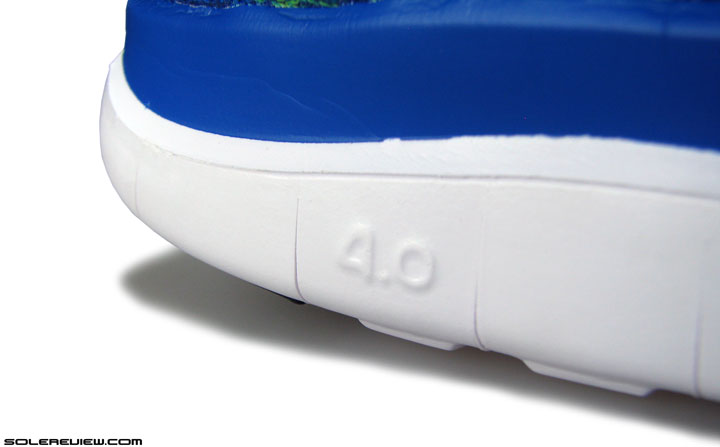
The 4.0’s purpose on Nike’s minimalist scale was hard to see at first, till the Flyknit upper came to its rescue.
With only a single numerical tier separating Free 3.0 and 5.0, two was a crowd, and it was into this packed territory than the Free 4.0 jostled its way in. When this first happened in 2011, the intent of the Free 4.0 was a bit unclear. A running shoe enigma, if you will.
If someone wanted to buy a minimal Nike Free, the 3.0 was a good choice to slip into, and if more cushioning was the need of the hour, then the Free 5.0 was the go-to shoe. So why buy the 2011 Free 4.0?
Mating the Flyknit upper with the 4.0 midsole last year brought in much clarity from a differentiation viewpoint. It also helped that Nike stopped producing the 5.0 version of the Free Flyknit, and instead limited that option to the lowered numbered versions. Now speaking of the aforementioned models – the 2014 Free 3.0 and 4.0 – there was a clear fit and aesthetic distinction.
The 2014 Free 3.0 came with a true slip-on construction without a tongue and the thinner midsole of the two. On the other hand, the 4.0 used a one piece Flyknit upper, but had the traditional trappings of a tongue flap. Not to mention a more ‘relaxed’ fit than the super compressive 3.0 Flyknit, and a midsole volume right in the middle between the 3.0 and 5.0.
When you read marketing descriptions put up by brands, what you usually encounter is a verbose, hyperbolic adjective laden section drumming up the many (supposed) superpowers of the shoe. Go over something like that often, and after some time your eyes glaze over; the words really fail to make an impact. But here at solereview it is a pre-review ritual to read all that, for there could be nuggets of factual information hidden between the lines.
On the flip side, we could see something which a particular shoe is potentially not, and validate that claim during our test wearings. Usually that does not end well.
So it was like a breath of fresh air when we read a line on the 2015 Free 4.0 Flyknit’s product page which for once, accurately summarized the product. It goes, “…more cushioned than the Free 3.0, and closer to the ground than the 5.0’. At a basic, functional level, this is the perfect way to describe the 4.0’s ride quality.
The Free 4.0 Flyknit also stands out from the pack in the way which its upper is constructed – a design with a greater mainstream appeal. And when you also consider the sweet spot of a midsole which the 4.0 comes with, it makes the latter, in our opinion, the best Nike Free model till date.
We had a solid opinion of the 2014 Free 4.0 Flyknit, and we’re pleased to report that its 2015 update can definitely be called an improvement.
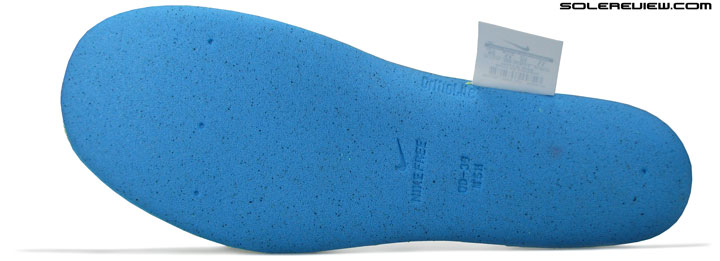
Most of the Nike Free models are actually well padded. Helped by things like a foamy Ortholite sockliner, among other machinations.
That might sound like a sweeping statement to make, so we owe you an explanation. Nike Free’s product goal is to allow for a more ‘natural’ ride, which we interpret as an heightened sensation of a closer to the ground feel – a by product of reduction in footwear bulk.
The ‘barefoot’ claim is pure marketing fluff; all the existing Free models have adequate cushioning coming from a reasonable level of midsole structure and heel drop (8, 6 and 4 mm). The shoes are very flexible and afford the foot a greater range of motion, but still far removed from running without shoes, and for that matter, even barebones racing flats or full blown minimalist shoes.
Want to know what ones of the closest shoes to ‘barefoot’ feels like? Go for a 10k in one of Vibram Five Finger’s earlier models, and if you’re not used to such a level of footwear minimalism, your Achilles and calves will quickly feel the merciless wrath of zero or negative heel drop.
Nearly no cushioning too, so if unconditioned, your undersole will experience a tingling sensation even after a brief 5k run.
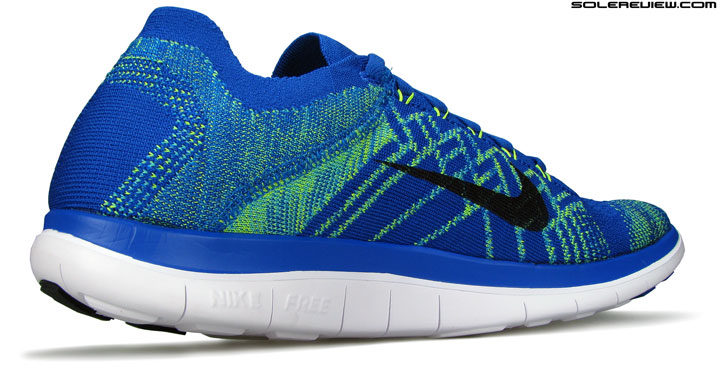
The feeling of a less of a shoe while running is good, and this is where the Free 4.0 proves its mettle.
Nonetheless, the yardstick by which we judge the Nike Free is that how ‘less of a shoe’ it feel during runs, while juggling cushioning, ride and fit efficiency in well proportioned measures. And it is within this context that the Free 4.0 Flyknit performs impressively. There are a number of changes on the upper fit this year which are marked improvements, while the midsole design carries over from 2014.
And what changes might those be?
Like what we saw on the Flyknit Lunar 3, even upper updates can affect the ride quality, just by changing the foot’s position in relation to the midsole length. That applies to the new 4.0 Flyknit as well, though of a lesser magnitude than that of the Lunar 3. So let’s do a detailed rundown of the 4.0’s ride manners first.
As a starting point, it would be insightful to compare the 4.0’s ride with rest of the line. You might already have tried all three at the store, and on the fence with regards to which one to spend your money on. Let us help you tip over, depending on what you want your pair of Nike Free to do for you.
Wear test the Nike Free 3.0, 4.0, and 5.0 side-by-side during the course of a single day, and the subtle difference(s) in ride quality start emerging. The 5.0 is clearly a foam infused dilution of the ‘barefoot’ plug; it is very well padded underneath, and matched upstairs with a soft, slipper like upper. The Flyknit 3.0, in line with its positioning, has the most minimal Free midsole of all – but not as barebones as how the original 2007 Free 3.0 was, which came with wide spacing between the grooves and a willow-o-wisp of an upper.
Relative to the 3.0 and 5.0’s ride quality, the 4.0 does feel like being right in the center. The instant drop in midsole softness can be sensed vs. the plusher 5.0, while maintaining a better level of ground feel insulation against the relatively spartan 3.0. One thing is a common denominator across, and that’s hexagonal lug design.
If you read our Nike Free reviews from the previous year, we talked at length about Nike’s switch from an angular, intersecting-squares midsole design to a hexagonal layout. We noted, as a general comment, that the new design smoothened out the hard corners and resulted in a ride behavior which felt very cohesive.
A quick side note here. Nike emphasized the newness of the ‘multi-directional’ midsole flexing on the 2014 Free refresh, but there has been a past instance of such a design. Many years ago (seven, we think) Nike Women’s training had a shoe with a ‘Diamond flex’ outsole. While this was one geometric step away from a hexagonal design, the basic premise and behavior was very similar to current generation Free. Nike did not call the shoe Free back then, but that is really a matter of semantics.
Women’s training assortment seems to get its share of flexible midsole variants. If you did not know, there’s also a Free 1.0 in the current line-up. Go figure.
Anyway, back to our story. The then (2014) newfound smoothness of character extended to the Free 4.0 too – it produced a smooth ride, as the entire midsole has a rounded-off design to it.
The heel area’s got a nice upwards slope or bevel for rear-foot strikers; and if you land in the front, a colony of tightly grouped foam hexagons spread loading evenly. The outsole is full contact and made mostly of a single material, with the exception of blink-and-miss-it rubber toppings on the heel and toe.
Above the midsole is a separate Ortholite footbed, exactly the same as the 2014 Free 4.0 except for the text callouts on top, and this is placed over a base of foam (grey) lasting. So while the midsole foam is quite firm, the insole isn’t. If you feel a part of the shoe to be soft, this lining of spongy foam is what’s responsible for that impression. The insole is of a respectable thickness too; this is no Hoka Ortholite.
The combination of the full contact outsole and material sameness along the midsole length makes the process of weight loading a smooth one. There aren’t any soft or hard spots, or the sense of gap beneath, because there isn’t any. Add to that the still novel Hexagonal design of last year’s vintage, which splays out under weight minus any sharp edges or gaps between the pillars.
So basically what this means is that the Free 4.0 Flyknit turns out to be cadence or pace friendly. The question of comparing a purpose designed ‘fast’ shoe (Lunaracer 3, Lunar Tempo) and Free 4.0 Flyknit might be brought up by some, and to that we say that there are mainly two areas of difference. First, that the 4.0 forefoot does not have a touch and go feel because of its extremely flexible frontend. This is in stark contrast vs. ‘faster’ shoes, where a firmer forefoot makes short work of quicker push offs. On the entire Free line-up, that stage of transition is a little more work.
The other (potential) side effect of this is temporary foot/Achilles/Calve soreness for a minority of runners – if one transitions abruptly down from a regular 10-12 mm drop shoe. The Nike Free 4.0 is listed with a 6 mm heel to toe differential, and this cautionary note applies to other lower drop (6 and below) non-Free shoes as well.
Otherwise transition as a whole is very seamless – the unchanged material across the length and the lack of gaps in the outsole design sees to that. There aren’t any sink-in zones or drastic changes in foam density across, save for the cushioning change due to gradual, forward tapering.
Second, the forgiving nature of the 2015 4.0’s upper fit dials down the perceived sense of focus vs. a racer. If you can respect this difference, you can throw the Free 4.0 in the rotation on days when you want to go a bit faster, but without the slim hardness of racing flats. Know that we’re talking about the 2015 Flyknit here, on which the upper is far more relaxed than last year. The 2014 model had a much tighter upper fit, and hence closer to narrow speedsters.
The Free 4.0’s midsole excels at delivering ground feedback. And this is another area where Nike gets the tiering right; it is supposed to sit right between the 3.0 and 5.0 in terms of ground feel, and that positioning plays out very well in real life too. The levels of ground insulation are perfectly matched with the numerical prefixes.
Now the level of the 4.0’s midsole cushioning can be a detriment when it comes to long runs – talking >15 miles – if you have always relied on shoes with chunkier midsoles for that purpose. In case one is accustomed to racing flats, or even quasi-racers such as the Zoom Streak, then you can very well run a marathon in the 4.0. There is ample padding relative to hardcore racing flats.
The lower profile design aspect of the Free 4.0 midsole (for that matter, all three Free versions) makes the midsole adequately stable, without any lean/bias or distraction. The word ‘stability’ has ambiguous connotations within the running shoe industry, almost bordering on dangerous. And some may ask, why does solereview keep calling a shoe stable when there are no ‘stability’ or ‘support’ features?
We see this confusion as majorly the brand’s doing, when they make their ‘pronation control’ model synonymous with ‘stability’ ones, when in fact, many motion control shoes (NB 860 V5, Nike Structure 17) are the exact opposite of that. When did a shoe with a firmer medial post and a softer lateral sidewall become stable? Such shoes are anything but, and of all the marketing terms used, we feel words like ‘guidance’, ’structured’, or ‘control’ are appropriate adjectives. Certainly not ‘stability’, unless that word and the shoe actually end up agreeing with each other.
However, the supportive nature of the Nike Free platform should be viewed only from a linear directional perspective, or in other words, limited to running only. Many people use the Free for gym workouts, and if you were to perform lateral movements in the Free 4.0, the sense of confidence will be quickly eroded. The foot tends to slip over in case you engage in side to side movements, which happens to be a side effect of the unstructured upper. We felt that this was something worth highlighting, going by the trend of questions (on this topic) in the comments section.
We did say that one of the upper update areas on the 2015 Free 4.0 influences the perceived level of cushioning, and you wouldn’t want to miss out on that, would you?
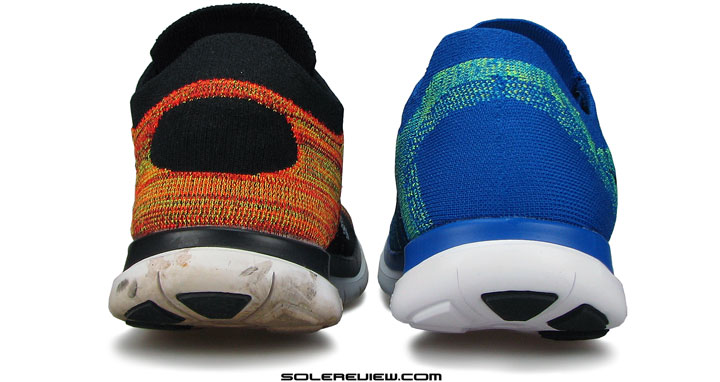
Same midsole, but upper design change affects ride. Hint? Black window of heel stretchy-ness on the left. (2014)
The 4.0 upper gets updated in more places than one, but the one which concerns the ride happens in the heel. We assume that you’ve taken in the picture just above, so we’ll point out the noteworthy area of difference across the successive versions of the 4.0 Flyknit. See that black heel window on the left? That used to an elastic window on the 2014 Free 4.0, more stretchable than the rest of the heel Flyknit textile.
It allowed the curve of the heel bone to sit a bit behind in the rearfoot, and consequently moving the foot’s position backwards over the midsole. That changes on the 2015 Free 4.0 Flyknit, where the window disappears, and that vacated spot is filled in by the rest of the Flyknit fabric. As the new heel design is not as stretchy, the foot sits slightly forward when compared to the 2014 version.
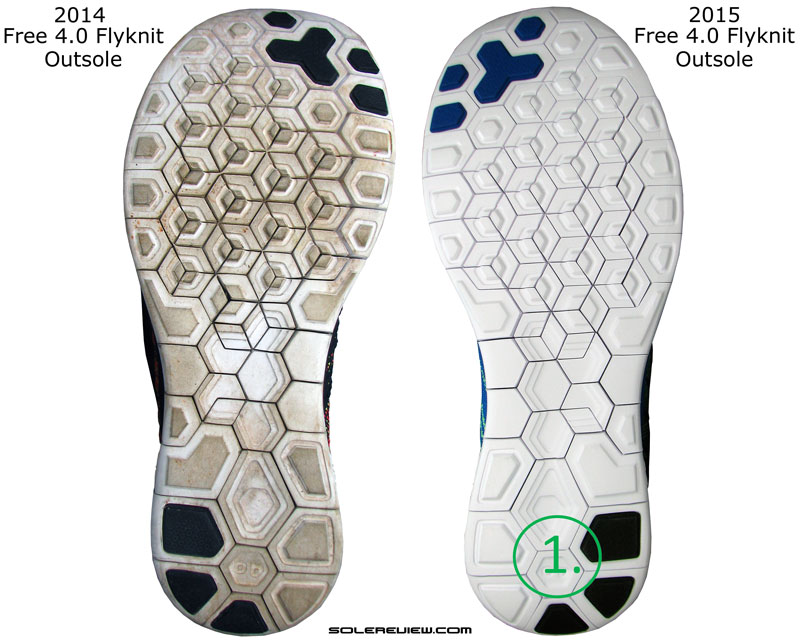
Very minor shift in footstrike position happens if you are a rearfoot lander. Not applicable for forefoot strikers.
And as you might have already guessed, it alters the footstrike position for heel/rearfoot landers. Regardless of the place you footstrike in the rear, some difference in cushioning will be felt. Forefoot strikers will be unaffected, at least not to the extent that you will notice something amiss compared to the 2014 Flyknit.
In many cases of new shoe updates, the knight in shining armor tends to be the revised midsole design. You know, brand new foam or outsole geometry which either betters cushioning and responsiveness levels, transition, grip or all. The proverbial hero who saves the day, eliciting oohs, aahs and hurrah about the improved ride quality.
Well, for the Free platform, that moment of midsole fame was last year. Since the lower parts are carried over in its 2014 guise, the part which really makes the Free 4.0 Flyknit better is the brand new upper.
Some background would do us good. When the Free Flyknit first came out in 2012, we loved it, but many did not. Too tight, with a super compressive upper fit – the kind which leads to polarising opinions. It did not help that the upper was a retrofit over an older, pre-Flyknit era 5.0 midsole.
The 2014 Free Flyknit assortment corrected to that to some extent. The midsole were purpose designed for use with the knit upper, and models like the 2014 Free 4.0 Flyknit made the compressive fit more palatable to a wider audience. But now looking back, the fit was still very snug, likely alienating a segment of runners.
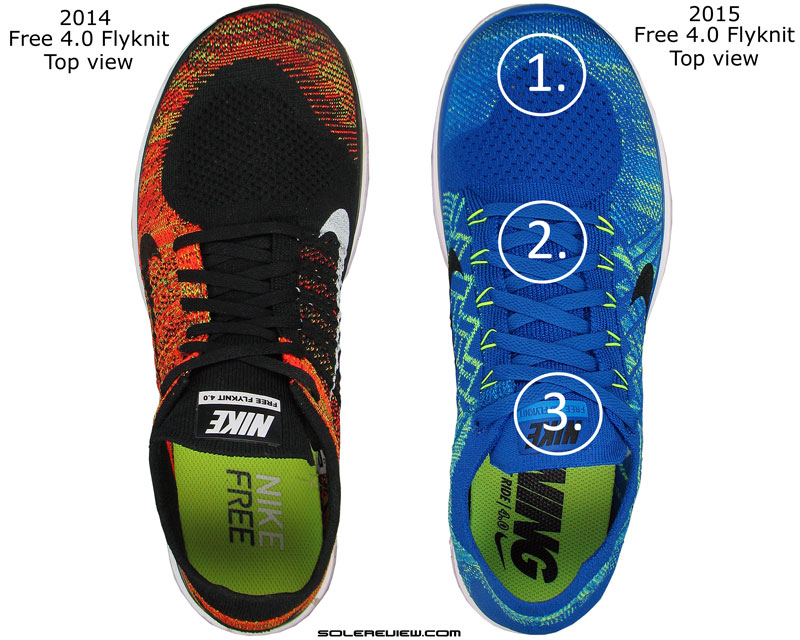
1) Higher toe box room 2) Lacing now more centered than last year (which was slightly skewed) 3) Tongue is made of a lighter weave, and is softer.
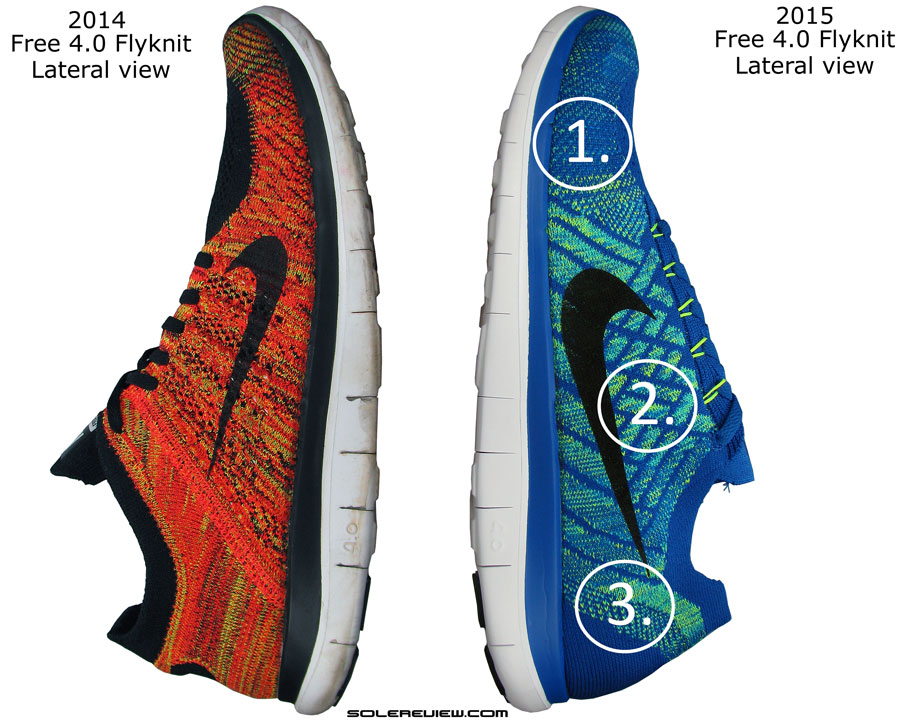
1)Raised forefoot walls 2) Midfoot panel not as compressive as before 3) Collar band is of lighter density, and the elastic window disappears.
The improvement of the 2015 Free 4.0 is a result of collective updates, and all of that happens on the revised upper. The essence of it is that the 2015 Flyknit upper’s fit transforms – in two, inter-related ways.
Firstly, the overall fit character is less compressive than the 2014 version, and two, the pressure from the Flyknit wrap is spread much more evenly on the 2015 model.
It all starts with increased room in the 2015 model, all the way from toe to heel. Take a moment to look at the bumper-to-bumper picture here; the raised sides of the toe box and forefoot sides are clearly visible.
We first thought there was a fabric stiffener inside; but when cut through, we found nothing. So basically, it is a tighter knit density around that area which gives it that rounded aesthetic.
This change ends up making the forefoot more relaxed, and the toe box higher. But this doesn’t mean that you should immediately go and buy a half size smaller. Sizing stays true across both these years, for the simple reason that the heel design has changed.
And how does an upper heel update affect sizing? Hey, we already talked about it in our ride break-out, but that was a thousand words and ten minutes ago, so we’ll go over it once more.
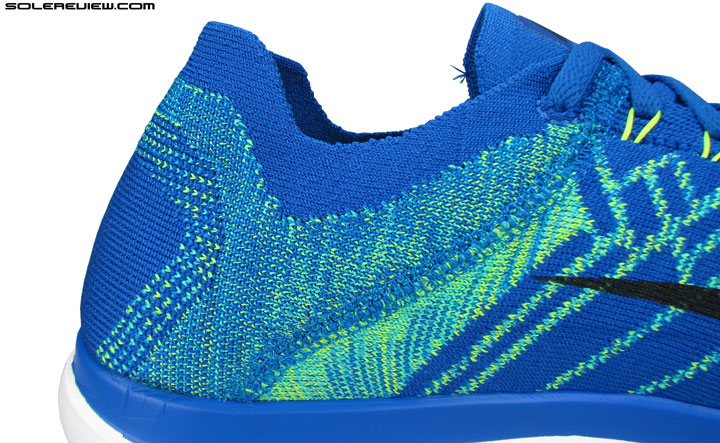
Note how the heel slopes forward this year. So while the toe box gets more vertical room, the sizing stays constant across – as the foot moves forward a bit forward.
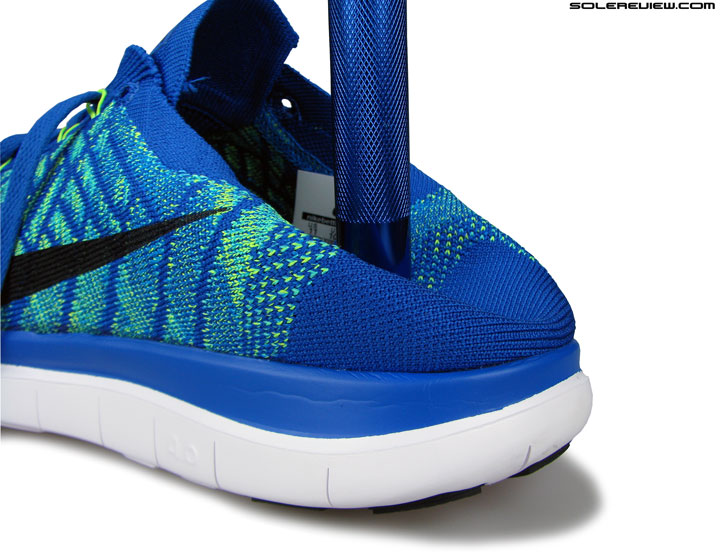
Most of you know this, but for the benefit of those who don’t: the Achilles friendly heel is completely collapsible.
Since the 2015 Free 4.0 does not have that elastic heel window, the foot sits a bit forward relative to the 2014 Free, and pushes forth into the toe-box.
So if anything, there is a less space ahead of the big toe on the 2015 Free compared to last year, except it doesn’t feel that way. Because the toe-box is more spacious, that’s why.
We’re on the topic of the heel fit, so we’ll talk about the second noticeable tweak. Even with the stretchable window gone, the 2015 heel still ends up feeling more easygoing than the previous design.
You know why that happens? The trick lies in the collar walls are constructed – the ribbed, elastic band which snaps around the foot.
If you compare the 2014 and 2015 Free 4.0 Flyknit’s collar thickness, you will instantly be able to tell how much thicker the 2014 material was. It was nearly twice as heavy duty of how the 2015 band feels like, and this has a significant effect as far as reduction of the compressive behavior is concerned.
The 2015’s thinner Flyknit band is much easier to stretch, and does not close in as aggressively as the original model did. We must point out that the heel isn’t lacking in grip, but only ends up feeling easier on the skin.
It’s funny how things work, isn’t it? On the face of it, both the 4.0 Flyknits look deceptively similar, and who’d have thought the gamut of fit updates? These are the times we think our review makes itself useful, as we obsessively pore over each and very inch of the shoe. And so far we have only touched upon the topic of forefoot and heel updates – the midfoot design refresh makes its impact felt more than any other area.
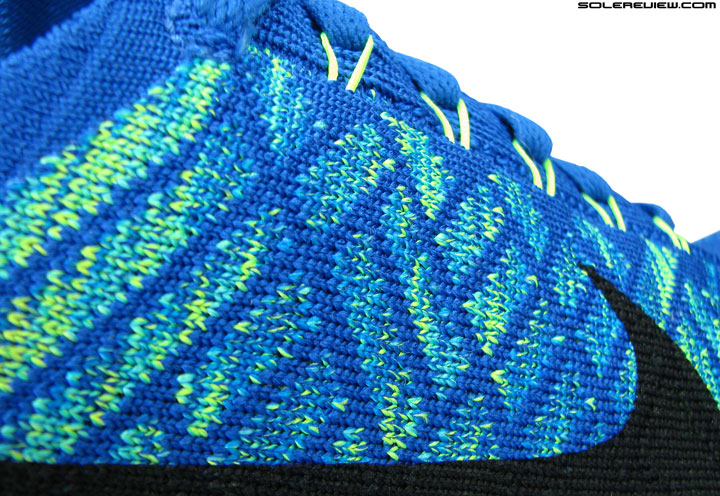
The midfoot panels are flatter, and don’t have the seersucker kind of texture which came with the 2k14 Flyknit. This makes the insides more relaxed and smoother.
Quite a few things happen on the midfoot, though none of this can be seen or understood by merely looking at images. Like how the lacing is now more centered than skewed; or the stretchable midfoot panels changing into a flatter one with lower elasticity. Not to be missed is also the fact that the lateral (outer) midfoot panels are higher, and the medial ones shorter than the 2014 Free 4.0 Flyknit – a logical result of changing the lacing position.
Or the tongue which feels lighter to the touch and easier to stretch over the foot, helped both by the lighter density material and a woven fabric label instead of a rubberized one on its top flap.
All these factors mix together well to produce a midfoot fit which feels substantially spacious than the ’14 Free 4.0 Flyknit.
The switch from a stretch Flyknit midfoot to a flatter profile one and change to a centred lacing is what makes most of the fit difference. With the lacing aligned more or less along the center, the lateral Flywire lacing pressure decreases.
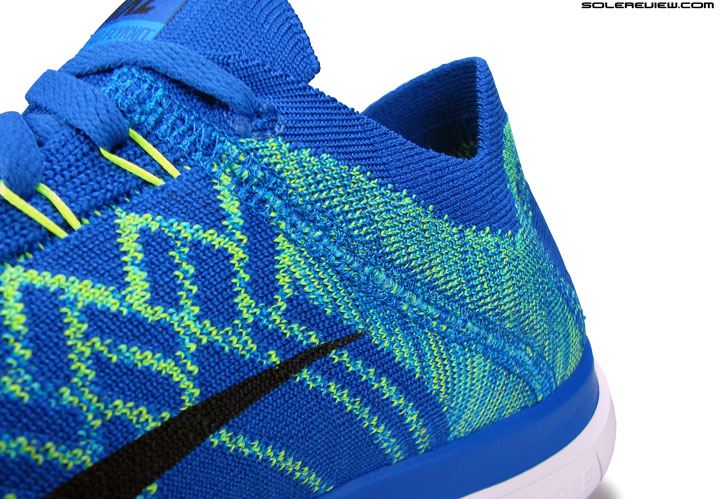
Only one seam this year on the medial (inner) side. So this implies the use of a true single piece Flyknit upper.
There’s more. The 2015 Free 4.0 is now constructed using a single piece upper – the 2014 free had two pieces, the twin flat lock seams were a dead giveaway – so that’s a design improvement. A smoother midfoot panel also means that wearing the 4.0 Flyknit barefoot is now also better. It helps that the tongue flap is shorter; in other words, the inner sleeve is larger and more accommodating. The Free Flyknits have always been comfortable for running without socks, and this fit change makes it even more suitable.
If there is one potential drawback, that would be the decreased foot lockdown due to the comparatively relaxed upper. This isn’t a problem when running on a flat surface, but runners going up and down a gradient will discover their foot moving inside a bit.
If you really miss the snappier fit of the previous generation 4.0, then you can either pick up the 2014 version, or try the 2015 Free 3.0 Flyknit, which comes with a compressive sock like upper – with a shallower toe box and a higher lateral collar wall. The new 3.0 Flyknit has also undergone fit transformation in the same spirit as the 4.0; meaning lighter weave, and expectedly, less of that 2014’s super snug feel.
Also know that there exists another model of the Free 4.0 in a non-Flyknit version alongside the Flyknit flavour. At $90, it undercuts the regular 5.0, and hence, is cheaper than both the Flyknit versions of the Free. The upper shares design aesthetics with the Free 5.0, and is based on the same midsole we talked about here.
So you want to go Flyknit free, and not the other way around, the regular 4.0 is good a deal as any.
(Disclaimer: For this review, Solereview bought the shoe at full US retail price.)
Looking to upgrade your older Nike Free 4.0 Flyknit to the latest version, but not sure how the 2015 model compares? We can help here. The following infographic is a ready-reckoner for what changes you might expect in the new model vs. old. To make this more fun, we’ve put in a system of percentage match, which calculates a weighted average for a set of attributes.
A higher or lower match percentage is neither good or bad. The % number just tells you how similar or distanced the new shoe is from the previous version. Total match % is a result of weighted averages.

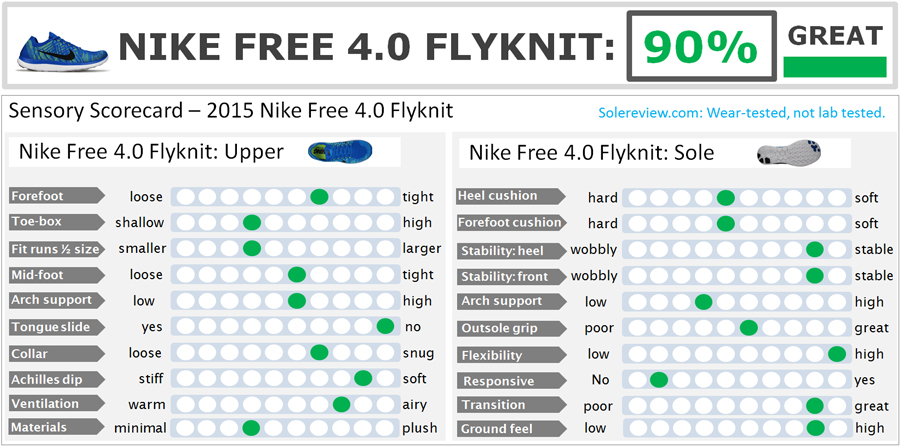
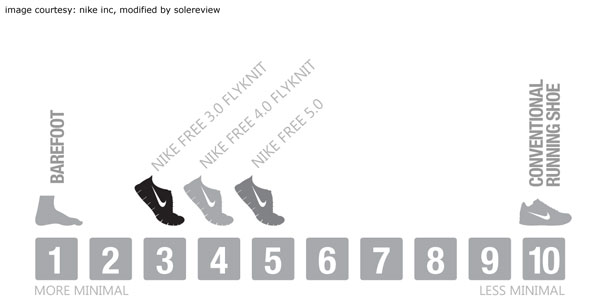
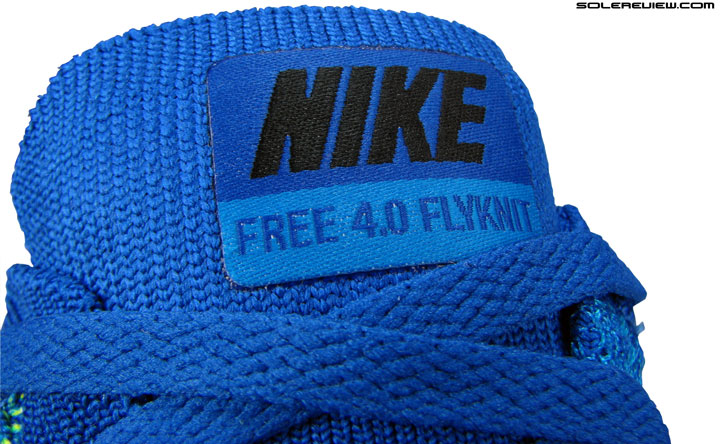
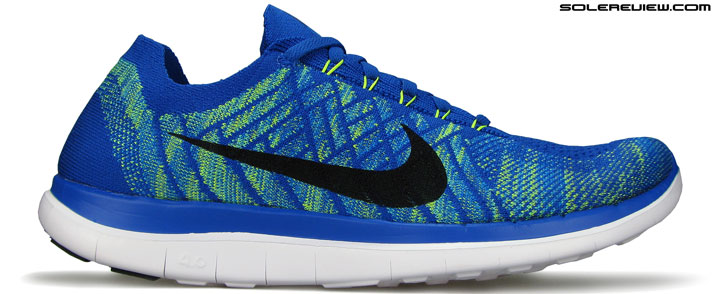
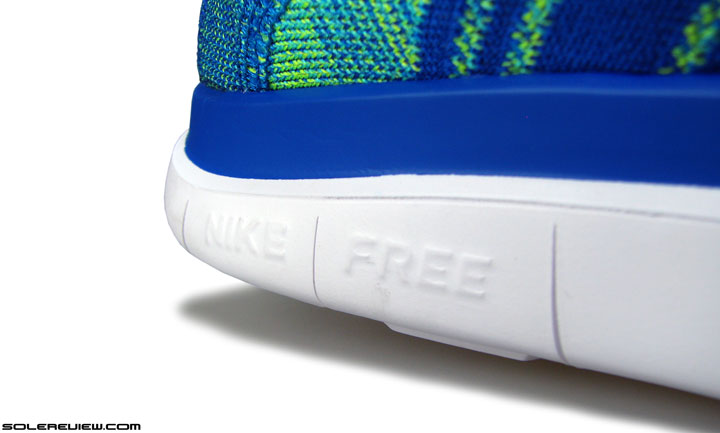
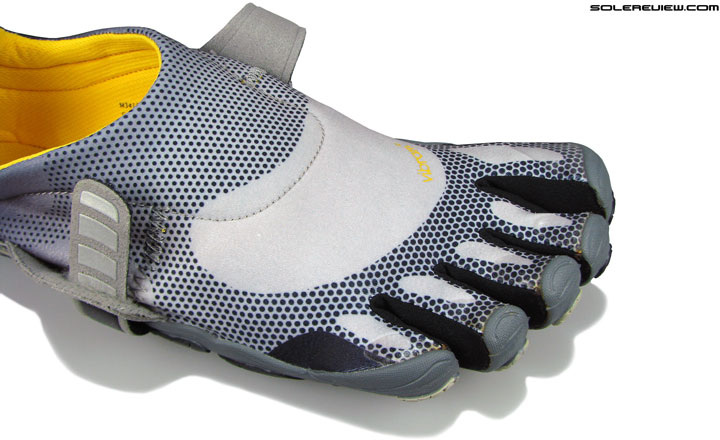
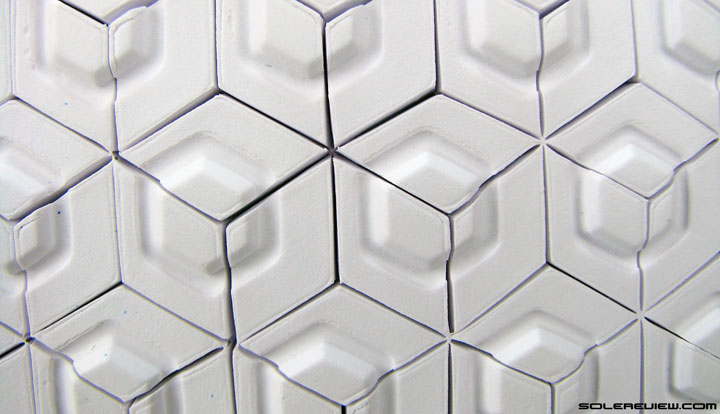
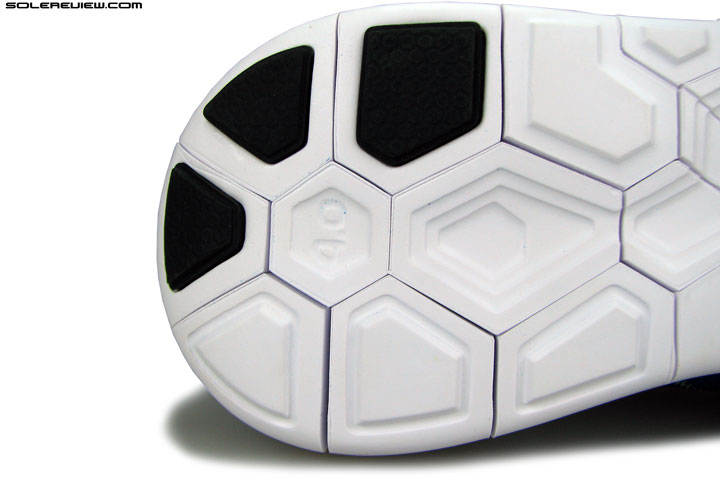
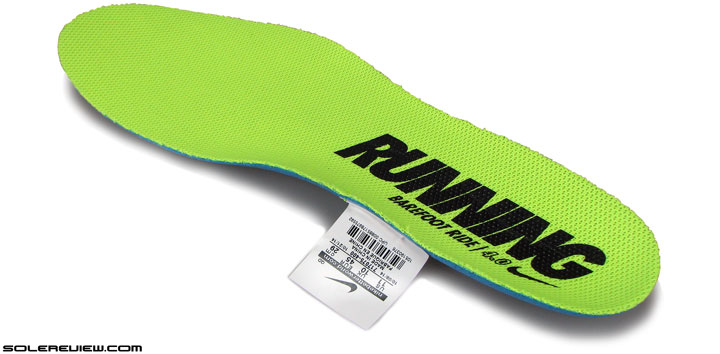
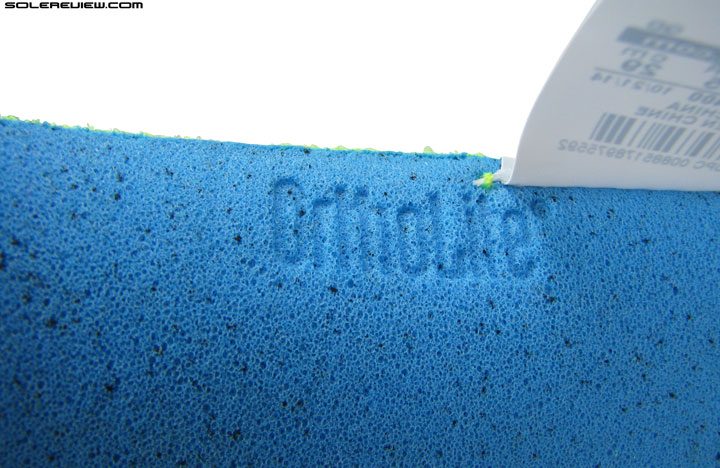
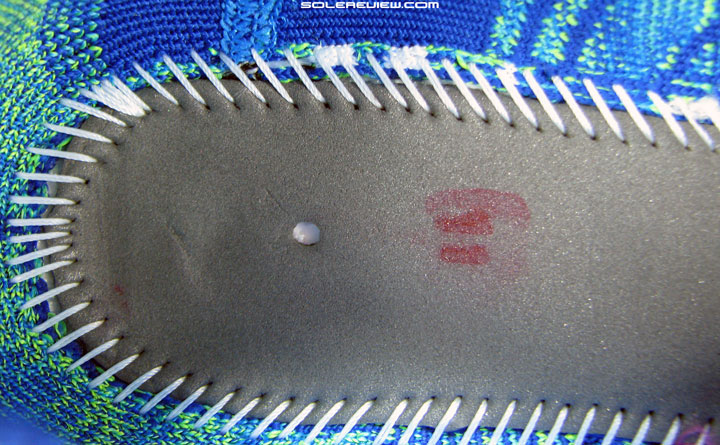
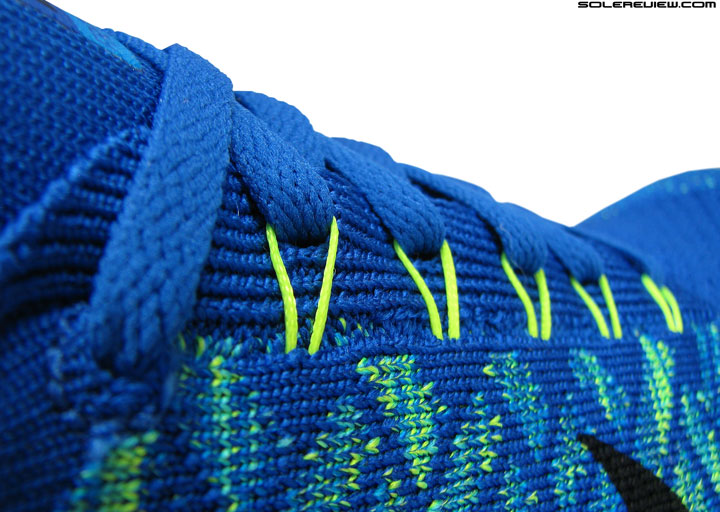
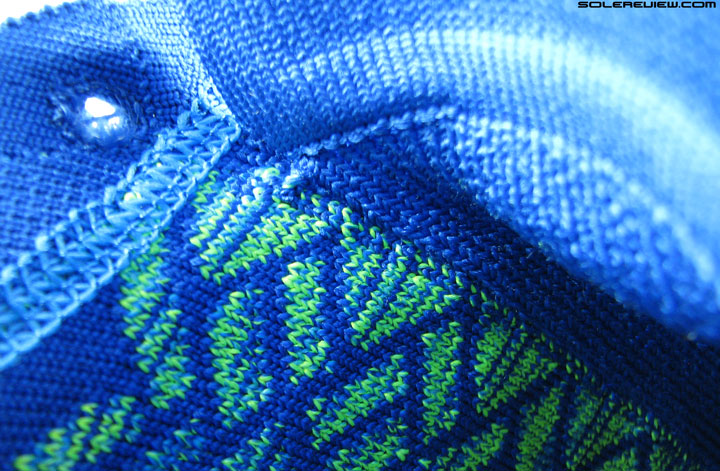
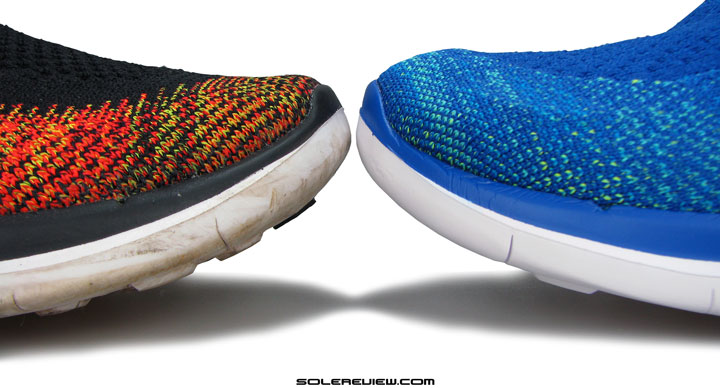
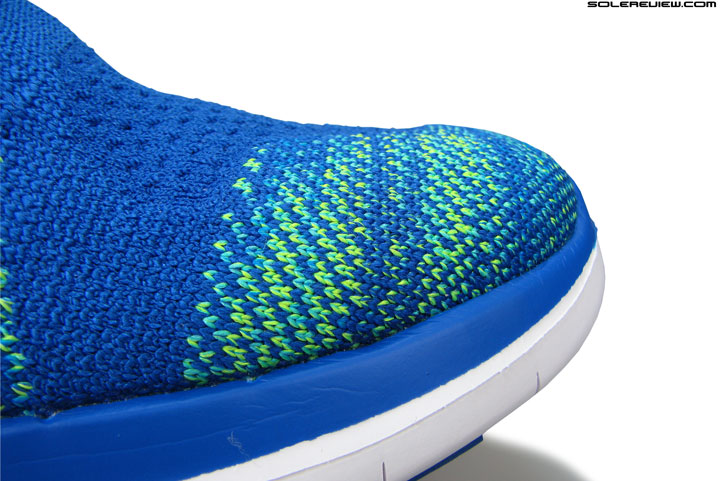
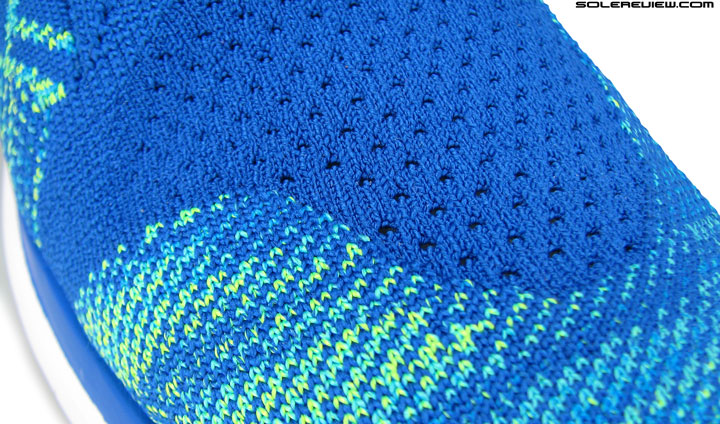
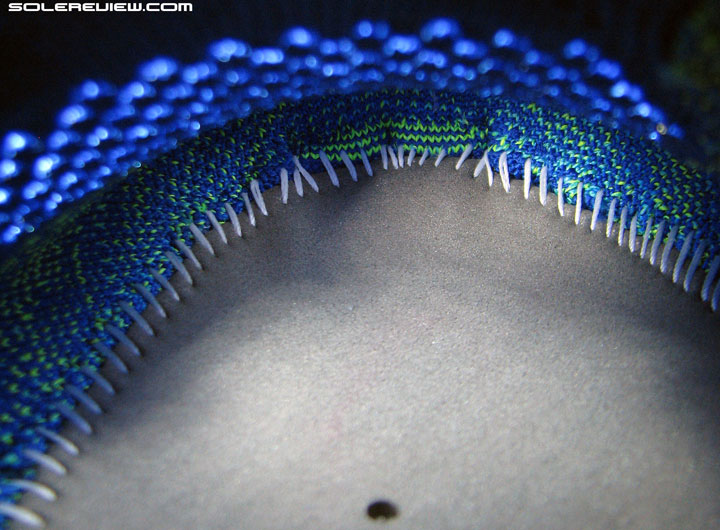
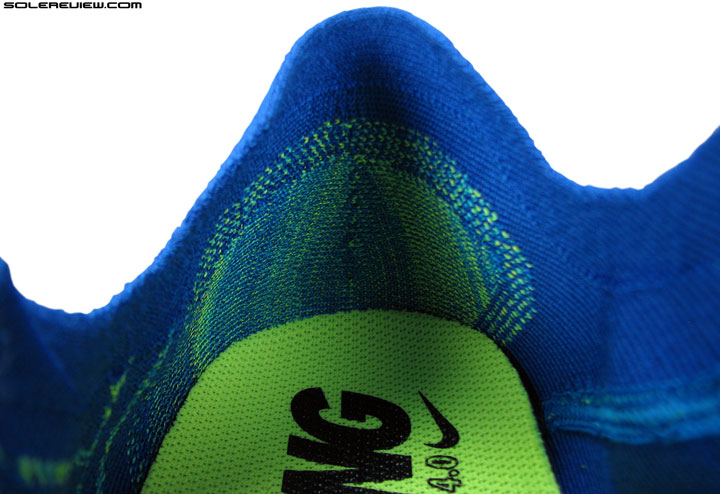
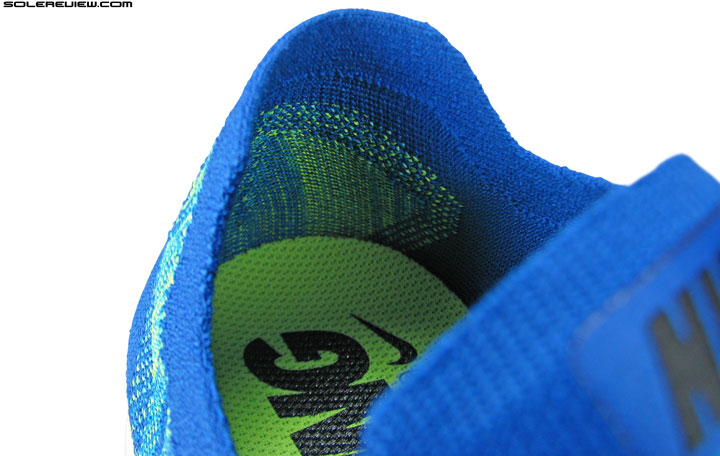
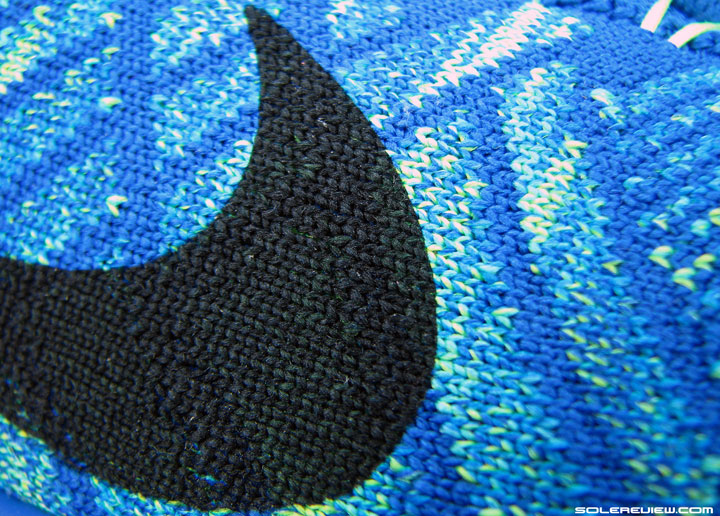
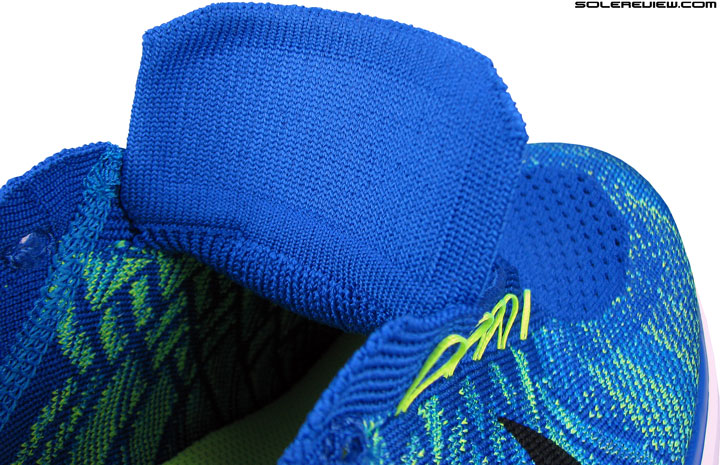
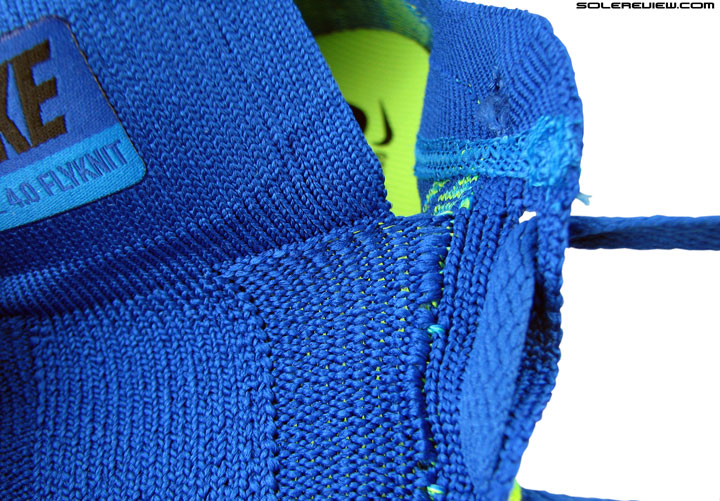
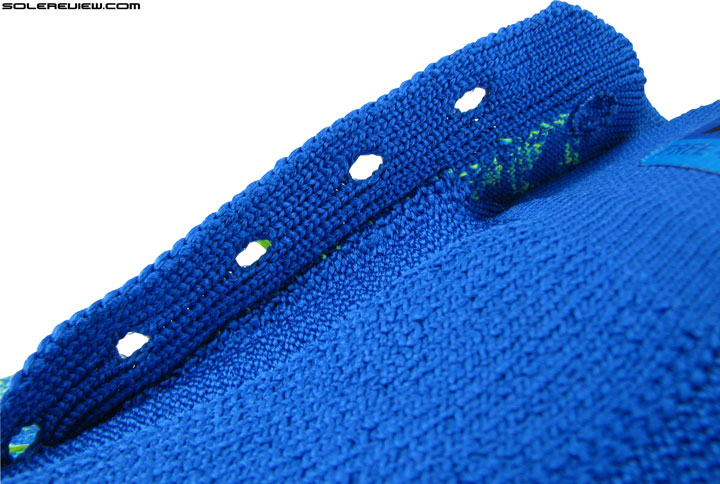
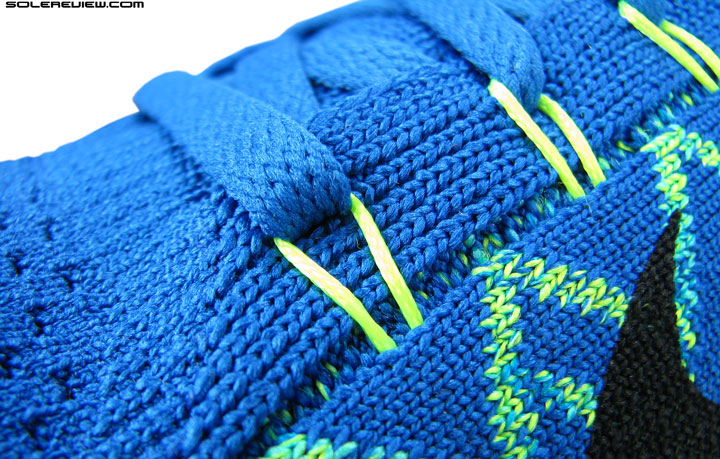
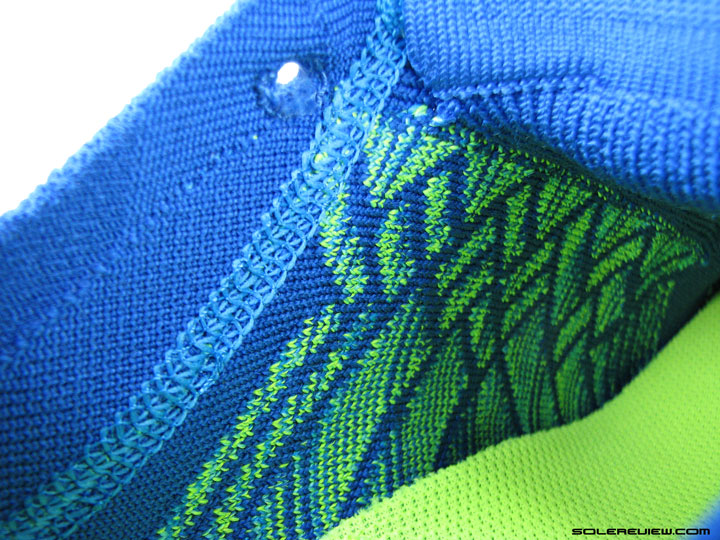
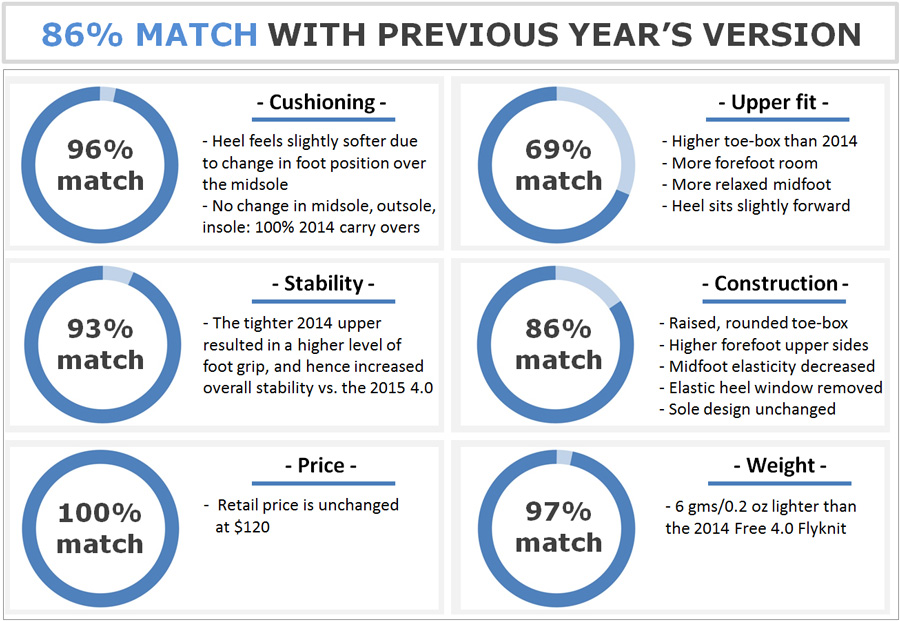
25 comments
Great review thank you, and wow these do look super appealing (looking for something a little lighter and quicker to pair up with my supernova glide 7). Only blocker right now is the crazy pricing – cheapest I can find in the UK is £110 (north of $170).
Any cheaper alternatives you’d recommend that stack up (or very close to)?
Sure, the 2014 Nike Free 4.0 Flyknit and 2014 Free 4.0 V4 should be available for a song and some change!
After trying on and testing several running shoes at a local running shop (Free 4.0 flyknit, Peg32, Vomero 10, Free 5.0) I landed on these. For me, they feel great. No bulk that I felt from Peg and V-10, and a comfier upper than the 5.0. After a few weeks with these my only response is, I want more. I love that they feel great and push me to better running times, and they also look amazing. Now I want to get the other colorways because I know this is a pure performance running shoe that executes well. The cherry on top is that they also look awesome (IMO).
Great to hear that! Our tip when you find a shoe which works wonderfully for you – stock up on extra pairs of the 2015 Free 4.0 when they go on sale the same time next year.
There will be duties/GST when importing into UK.
No, forces you to order from the UK site too, and whacks the prices up.. :( Promise no connection, but found a great site just the other day, everything a little cheaper: http://www.prodirectrunning.com/
Any chance of a review of something other than Nike?
Remember that there was a long drought of Nike review, so we’re just catching up. All in good time.
Is the upper flexible enough that a standard width would accommodate a wider foot? Also, would you consider it unwise for a heel striker to transition to this shoe from Pegasus 31s?
These run wider than last year’s 4.0, so should be ok. That said, these are snugger than the Pegasus, so give them a fit try first if possible.
The shoe works well for heel strikers, but there’s far less cushioning than the Pegasus 31, so that’s something which depends on your cushioning preference.
Hi. Great Review! I am currently running less than 4 miles twice a week with an old pair of adidas adipure 360.2 M cross training (D67865) that adidas refers as natural ride. Would the Nike Free 4.0 Primeknit be a good replacement? Thank you.
Hello Marc, the 4.0 sounds like a reasonable transition from the adipure. There’s enough cushioning to go for the mileage you describe.
Hi. I’m planning on getting flyknits 4.0 fairly soon but I’m not entirely sure on the size. My current shoes are a pair of broken in Janoski SB size 9, which are really comfy now but were quite painful for easily 3 or 4 weeks while breaking them in. Would you recommend going for a size 9 in those or sizing up?
I wear 1/2 size larger in the 4.0 flynits than any other non-Nike shoe. I have 3 pair of the 4.0 flynits (because I think they are amazing) and each time (out of habit?) I have tried on my “normal” size, then had to go up 1/2 size. I have found Nike, generally, to be 1/2 size smaller. Hope this helps.
Thanks a lot, this does help as although those will be my first flyknits (quite excited about this!), I’ve had a similar experience with other Nike shoe.
One more thing RE sizing: these fit completely different with socks versus no socks…so the comment about a 1/2 size larger really applies to whether you will ever wear them with socks. I can wear my regular size, but with my toes at the very end, if I don’t wear them with socks. But I need socks sometimes, and even the thinnest pair makes the shoes too small.
Oh, thanks for the heads-up! I don’t plan on wearing them sockless (I don’t really enjoy doing so and although I barely get cold it’s probably too cold where I live to go sickles anyway) so that’s perfect.
Have no idea about the Janoski’s fit, so can’t relatively place the Flyknit 4.0’s sizing. But Dustin seems to have useful insights below!
Hi, thanks for the review. I have owned a pair of Nike Free 4.0 Flyknit for about a month now. I run on every alternate days for about 3 to 5 miles every time on these. They feel really comfortable and flexible. However, my knees (mainly the side of my knees), are starting to feel really painful during and after every run. I am starting to wonder does this have to do with the shoes due to lack of cushioning.
Do you have any comments or recommendations for a smoother run?
Might not be due to the shoes. Best to see a physio who can recommend appropriate strengthening/conditioning exercises.
The comments/Q&A thread will be closed till January 17, 2016. Any inconvenience is regretted. Premium members can use their dedicated comment section, which will be open.
I have been wearing Nike Free 5.0 for training and races. I run about 50+ miles a week and am looking forward to my next marathon. Are the Nike Free Flynit an appropriate shoe for training and racing marathons? If not what do recommend?
The 4.0 fare no better that the 5.0 for long runs – it has slightly less cushioning than the 5.0.
If you need more comfort, then consider the Nike Free RN distance. Our review is here:
https://www.solereview.com/nike-free-rn-distance-review/
Dear SoleReviewers, I would like to experince the minimal/barefoot concept and all of my shoes are well cushioned and not very felixible (Nimbus 16, Ride 7 GTX and Pegsus 31). Would you recommend the Flyknit 4.0 2015 as a step into the minimal/barefoot realm?? Or maybe something else?? As always, thanks for your amazingly detailed and educative reviews :)
Hello Abazid,
Perhaps the Nike Free RN Distance is a better shoe to transition into. The upper runs a bit warm and snug, but there’s plenty of cushioning and flexibility.
Comments are closed.